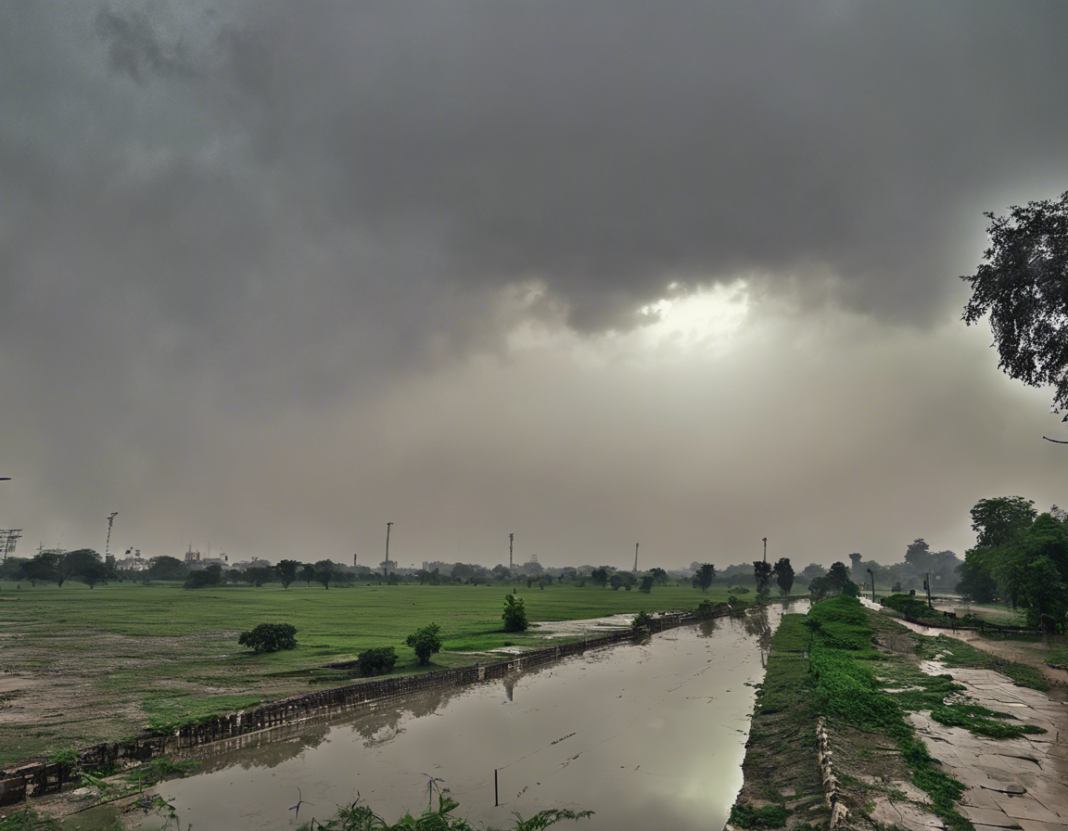Introduction
Kanpur, one of the largest cities in the state of Uttar Pradesh, India, experiences diverse and dynamic weather patterns throughout the year. Situated on the banks of the Ganges River, Kanpur’s location plays a significant role in shaping its climate. From scorching summers to foggy winters, residents of Kanpur witness a wide range of weather conditions. In this article, we will delve into the unique weather patterns of Kanpur, exploring the factors that influence them and how they impact the daily lives of the city’s inhabitants.
Factors Influencing Kanpur’s Weather
Geographical Location: Kanpur’s proximity to the Ganges River and the northern plains of India significantly impacts its weather patterns. The city’s location in the Indo-Gangetic plain exposes it to extreme temperatures and diverse climatic conditions.
Monsoons: Like many parts of India, Kanpur experiences the Indian monsoon season, characterized by heavy rainfall between June and September. The monsoons play a crucial role in replenishing the city’s water resources and supporting its agricultural activities.
Pollution Levels: Kanpur’s industrial activities contribute to high levels of pollution in the city, leading to environmental concerns and impacting the weather patterns. Pollution can result in smog, reduced visibility, and adverse health effects for residents.
Seasonal Weather Patterns
Summer (March – June): Kanpur’s summers are characterized by scorching heat, with temperatures often soaring above 40 degrees Celsius. The dry heat can be oppressive, leading residents to seek refuge indoors or in shaded areas.
Monsoon (July – September): The monsoon season brings relief from the summer heat, with cooling rains that rejuvenate the city. However, heavy rainfall can also lead to waterlogging and infrastructure challenges in Kanpur.
Autumn (October – November): Autumn in Kanpur is marked by pleasant weather, with temperatures gradually starting to drop. The clear skies and cool breeze make it an ideal time for outdoor activities.
Winter (December – February): Winters in Kanpur can be chilly, with temperatures dropping significantly, especially during the night. Foggy mornings are common, impacting visibility and transportation in the city.
Extreme Weather Events
Cyclones: Kanpur is vulnerable to cyclonic storms that originate in the Bay of Bengal and can cause widespread damage. Proper preparedness and communication are essential to mitigate the impact of cyclones on the city.
Heatwaves: The city faces heatwave conditions during the summer months, posing risks to public health and necessitating measures to ensure the well-being of residents, especially vulnerable populations.
Impact on Daily Life
Health Concerns: The fluctuating weather patterns in Kanpur can impact public health, leading to respiratory issues, allergies, and heat-related illnesses. It is essential for residents to take precautions and stay informed about health advisories.
Agricultural Practices: Farmers in and around Kanpur rely on seasonal weather patterns for their agricultural activities. Timely rainfall and moderate temperatures are critical for a successful harvest.
Urban Planning: Kanpur’s urban infrastructure needs to be resilient to various weather conditions, including heavy rainfall, heatwaves, and fog. Sustainable urban planning can help in mitigating the impact of extreme weather events.
Future Outlook
Climate change poses a significant challenge to Kanpur’s weather patterns, with potential impacts on temperature, rainfall, and overall weather variability. It is crucial for the city to focus on sustainable development practices, reducing pollution, and adapting to changing climatic conditions.
Frequently Asked Questions (FAQs)
- What is the best time to visit Kanpur considering its weather patterns?
-
The best time to visit Kanpur is during the winter months, from December to February, when the weather is pleasant and cool.
-
How does pollution affect Kanpur’s weather?
-
Pollution in Kanpur can lead to smog, reduced visibility, and health hazards. It can also impact cloud formation and rainfall patterns in the city.
-
Are cyclones common in Kanpur?
-
Kanpur is sometimes affected by cyclonic storms originating in the Bay of Bengal, which can bring heavy rainfall and strong winds to the city.
-
How can residents prepare for extreme weather events in Kanpur?
-
Residents can stay informed through weather alerts, have emergency supplies on hand, and follow safety guidelines issued by local authorities.
-
What are the main health concerns associated with Kanpur’s weather?
-
Health concerns in Kanpur include heat-related illnesses, respiratory issues due to pollution, and allergies triggered by fluctuating weather conditions.
-
How does Kanpur’s weather impact agricultural practices in the region?
-
Weather patterns in Kanpur, such as rainfall and temperature variations, play a crucial role in determining agricultural outcomes and crop yields for farmers in the region.
-
Is Kanpur susceptible to flooding during the monsoon season?
-
Kanpur can experience waterlogging and flooding during the monsoon season due to heavy rainfall. Proper drainage systems and flood preparedness are essential.
-
What are some measures that can be taken to mitigate the impact of climate change on Kanpur’s weather?
-
Mitigating climate change requires reducing carbon emissions, promoting renewable energy sources, implementing sustainable practices, and raising awareness about environmental conservation.
-
How does the Ganges River influence Kanpur’s weather patterns?
-
The Ganges River plays a significant role in regulating temperatures in Kanpur, providing moisture and influencing local weather conditions throughout the year.
-
What are some weather-related challenges faced by urban planners in Kanpur?
- Urban planners in Kanpur grapple with challenges such as extreme heat, pollution, water scarcity, and the need for climate-resilient infrastructure to ensure sustainable urban development.
Conclusion
In conclusion, Kanpur’s dynamic weather patterns reflect the city’s geographic location, seasonal variations, and environmental factors. Understanding and adapting to these weather conditions are essential for residents, policymakers, and urban planners to ensure the well-being and sustainability of the city. By addressing environmental concerns, promoting climate resilience, and adopting sustainable practices, Kanpur can navigate and thrive in the face of changing weather patterns and climatic challenges.









